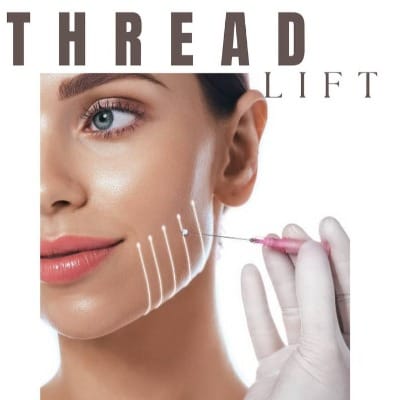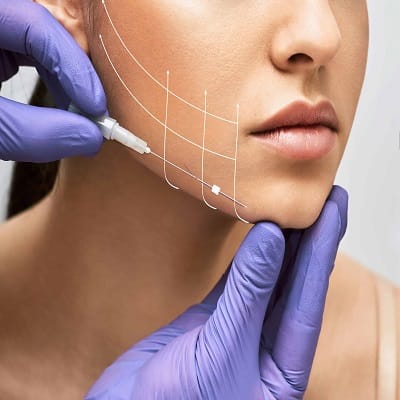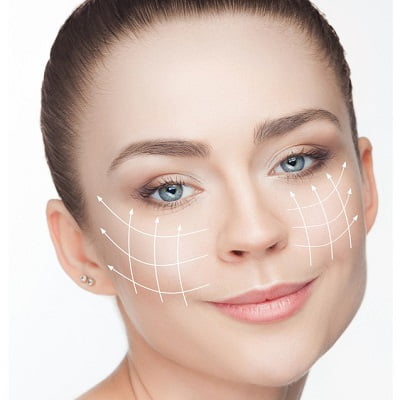Everyone wants to seem younger, many improvements in beauty medicine provide a variety of ways to do this. People in Islamabad who want to refresh their faces have two common options: a thread lift and a Traditional facelift. Making an informed choice regarding the proper treatment needs an understanding of the differences, benefits, and application of different methods. Here in this blog, we will discuss which is the best option Threadlift or a Facelift in Islamabad for people who want to look younger.
What Is A Thread Lift?
- Thread lift is a minimally invasive treatment, that can be used to lift and strengthen sagging skin.
- This method includes introducing biodegradable threads with tiny spikes under the skin.
- In addition to directly pulling the skin, these threads gradually increase collagen production, improving the skin’s softness and smoothness.
- You sometimes call a thread lift a “lunchtime procedure” because it takes only 30 to 45 minutes, requires minimal downtime, and provides immediate results.
- Those with slight to extreme bowing most often use it in areas including the lips, chin, and neck.
What Is A Traditional Facelift?
- A surgeon performs a rhytidectomy, or facelift, to treat more serious signs of aging in a patient.
- For a smoother, younger-looking appearance, this method includes removing extra skin, strengthening the muscles below, and rearranging the remaining skin.
- Although a standard facelift is a more intrusive operation that needs general anesthesia and a few weeks of recovery, it may provide striking and lasting results.
- People with serious face age, deep lines, and substantial skin flexibility may use this method.
Key Differences Between Thread Lift and Traditional Facelift?
Invasiveness:
Thread Lift: No stitches or cuts, slightly invasive.
A facelift is a medical treatment that involves making cuts.
Downtime
Thread Lift: Patients may quickly return to their normal tasks because of the little break.
Facelift: Some swelling and bruises are to be expected, and healing may take two to four weeks.
Results:
Thread Lift: Perfect for mild to moderate skin sagging, this product provides results that are gentle and natural-looking.
Facelift: For extreme age and droopy, more dramatic and full results.
Longevity:
Thread Lift: Depending on lifestyle and skin type, effects may last anywhere from one to three years.
Facelift: This is a long-term treatment, with effects lasting seven to ten years.
What’s the Best Choice for You?
Factors such as age, skin type, financial restraints, and desired outcomes influence the choice between a thread lift and a standard facelift for an individual.
Make a Thread Lift choice if:
- You have slight to serious sagging and are between the ages of thirty and fifty.
- You want a method that is fast to heal from and least annoying.
- You’re looking for a short-term way to improve your looks.
Select a Conventional Facelift if You:
- Have serious skin slippage and are at least in their late 50s.
- Want to see a major and long-lasting change in the look of your face?
- Feel at ease with both surgery and a longer recovery time.
Benefits of Getting These Procedures in Islamabad
Islamabad is a popular location for cosmetic treatments since it has several top-notch facilities and highly skilled aesthetic Physicians. The city’s clinics provide cutting-edge methods, cutting-edge tools, and individualized care to ensure the best results. In addition, many patients find Islamabad to be a desired choice due to the cost-effectiveness of its medical care when compared to other cities.
Why Consultation is important?
Consulting with a skilled doctor or plastic surgeon is important, regardless of whether you are considering a thread lift or a more standard facelift. They will assess the state of your face, talk about your goals, and offer the best course of action based on your requirements. To get safe and pleased results, be sure to ask the surgeon about their skills and experience during your visit.
Cost of Facelift/Threadlift in Islamabad:
The cost of a facelift in Islamabad falls within the range of PKR to PKR. The cost of a Threadlift in Islamabad falls within the range of PKR to PKR. This is the estimated price and the actual price will vary for each patient depending on factors like the desired outcomes, skin condition and
- Surgeon’s expertise
- Location of the Clinic
- The extent of removal of sagging skin
- Surgeon’s fee
Final Thoughts:
Both thread lifts and Traditional facelifts provide different benefits, and the best choice for you will rely on your personal needs. Traditional facelifts provide more thorough and long-lasting benefits for advanced age problems, whereas thread lifts provide a fast and non-invasive option to refresh your look. If you are thinking of any of these treatments in Islamabad visit SKN Cosmetics to start your path to a more young and bright appearance.










